tie and dye techniques in india
Tie Dye Techniques in India- Bandhani Ikat Lehariya by Kritika Bora July 6 2020 1009 pm 69k Views 0 Comments This article will elaborate on assorted fabric tying and dyeing techniques of India that deserve all the patronage appreciation and love that they can get. There is tie-dye evidence as far back as the 300s BC as Alexander the Great mentions in his texts the beautiful dyes he encountered in India.
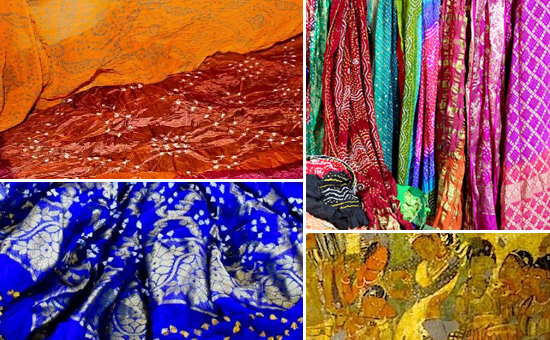
About Indian Tie And Dye Technique
The barah baag when opened looks like a garden of flowers - a set of 12 barah.

. The initial step is to dip the fabric in a color of your choice. It is also the oldest forms of decorated textiles. Tie and Dye Techniques of Gujarat India invlove various steps.
For centuries in India Japan and Africa different tying and dyeing techniques have. Read Tie Dye Techniques book reviews author details and more at Amazonin. The tye-dye technique differs to create varying patterns however at the base of it it involves.
The designs and patterns of tie and dye are made with the combination of little circles and dots. Various Tie Dye Techniques. Bandhani Indian Tie and Dye.
If your first piece doesnt come out exactly the way your pictured it dont be afraid to try again or even try a different technique until you get the hang of using tie dye. Started by the Khatri community of Gujarat in India the printing technique finds mention even in historical texts like the Harshacharita. Many believe and attribute the Muslim Khatri community of Kutch as some of the first to use this form of dyeing.
And its still used today. Combine these techniques with our 10 steps guide to. How are resists created.
Skip to main content in. The ancient Bandhani or Indian Tie Dye technique began around 5000 years ago in the Indian states of Rajasthan and Gujarat. Tie-dye became fully developed in China during the Tang dynasty 618-906 AD and in Japan during the Nara period 552-794 AD.
Its a very complex craft that uses thread. Tie And Dye Online. Tie and dye or bandhani is derived from Sanskrit word bandh meaning to tie and is one of the most popular and widespread textile arts of India extending across the country from the states of Gujarat and Rajasthan.
Many beautiful tie-dye shirts have been floating around lately. This method involves twisting the fabric. Then the fabric is folded to a quarter of its original size.
Bandhani was born in India around 4000 BC. It is an ancient art practise that is mainly used in the state of. Free delivery on qualified orders.
All of the tie dyeing patterns tutorials listed below have full instructions to make the process as simple as possible but keep in mind that some tie dye techniques are easier than others. According to the design and the motif each pattern has its special significance. Easy Tie-Dye Folding Techniques In this article Ill teach you how to tie some of the most popular tie-dye patterns such as the scrunch or crumple technique the rainbow swirl pattern shibori-inspired designs and more.
And tie as tight as possible so that the fabric remains inpenetrable to the dye. 6 Basic Tie and dye techniques Twisting and coiling In this method you simply twist the fabric and then tie it. Amazonin - Buy Tie Dye Techniques book online at best prices in India on Amazonin.
Here is a. Shop for Tie And Dye in India Buy latest range of Tie And Dye at Myntra Free Shipping COD Easy returns and exchanges. Bandhani and Shibori are ancient fabric dyeing techniques.
Bandhani is a popular type of tie and dye method in India. The areas that are tied. Even if youre new to the craft you can make your own.
We have the instructions you need to create anything you can imagine. A tie and dye technique that dates back to the Indus Valley Civilization bandhani is popular amongst all. Tie and dye is one of the most widely accepted and one of the very traditional methods of printing textiles in India.
The tying of cloth with thread and then dying it is the simplest and perhaps the oldest form of creating patterns on a plain piece of cloth. The chandokhni and shikhara are specially created for the brides. India is one of the leading countries in the use of the tie and dye method for fabrics.
LOCATION Bandhani work in India was started by the Khatri Community of Gujarat. Read article about Tie and Dye is a process of resist dyeing textiles or clothing which is made from knit or woven fabric usually cotton. The Captivation of Tie and Dye The textile industry in India has a colourful history consisting of a diverse range of techniques and traditions.
Different types of tie and dyes have been practiced in India Japan and Africa for centuries. They both create geometric patterns using tie-dye. History of Tie And DyeTie and Dye is the process by which a fabric is dyed using a particular resist dying methodIn this method the fabric or the material which has to be dyed is tied in a specific pattern and then binding it in place.
It is a resist dyeing method in which the areas you do not want dyed are blocked using different methods of tying and then the fabric is dyed. Tie and dye is a self explanatory term you just tie and then dye fabric. FEW TYPES OF TIE AND DYE presentation by- Priyal Thakkar 6 7.
The word Bandhani comes from the Hindi word Bandhan. Resists are created by the folding twisting pleating or crumpling of a fabric or garment and binding with string or rubber bands before application of dyes. Typically using bright colors.
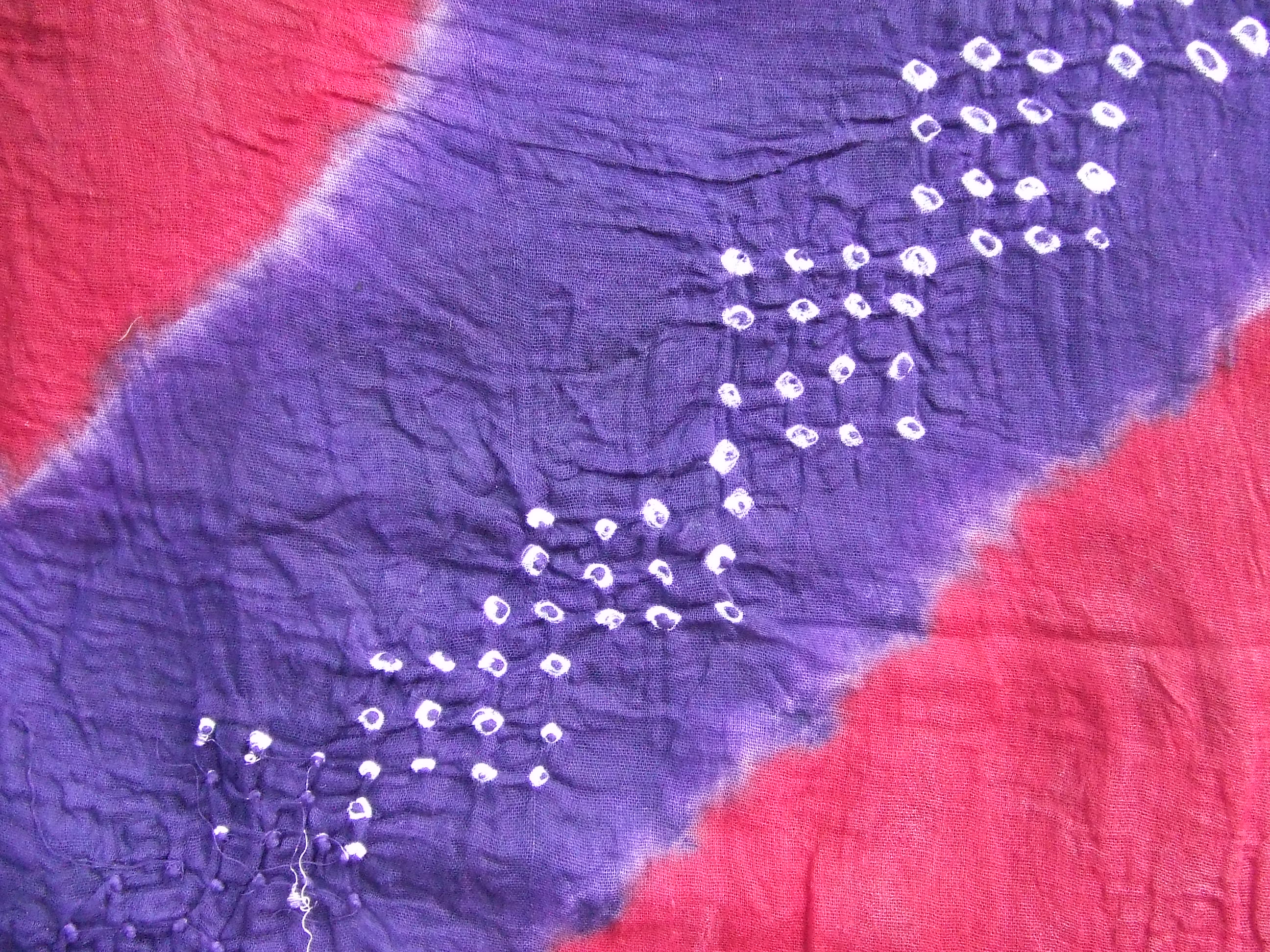
Bandhani Indian Tie Dye Flextiles

History Of Bandhani Or Indian Tie Dye Technique The Adair Group
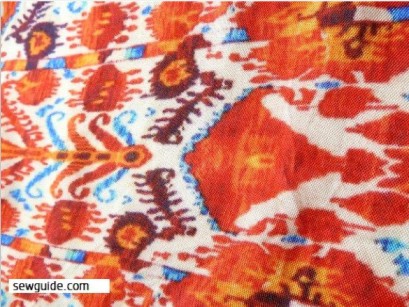
Tie Dye Techniques In India Tie Dye In India Bandhani Ikat Lehariya

Tie Dye Techniques In India Tie Dye In India Bandhani Ikat Lehariya
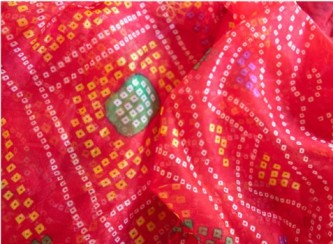
Tie Dye Techniques In India Tie Dye In India Bandhani Ikat Lehariya
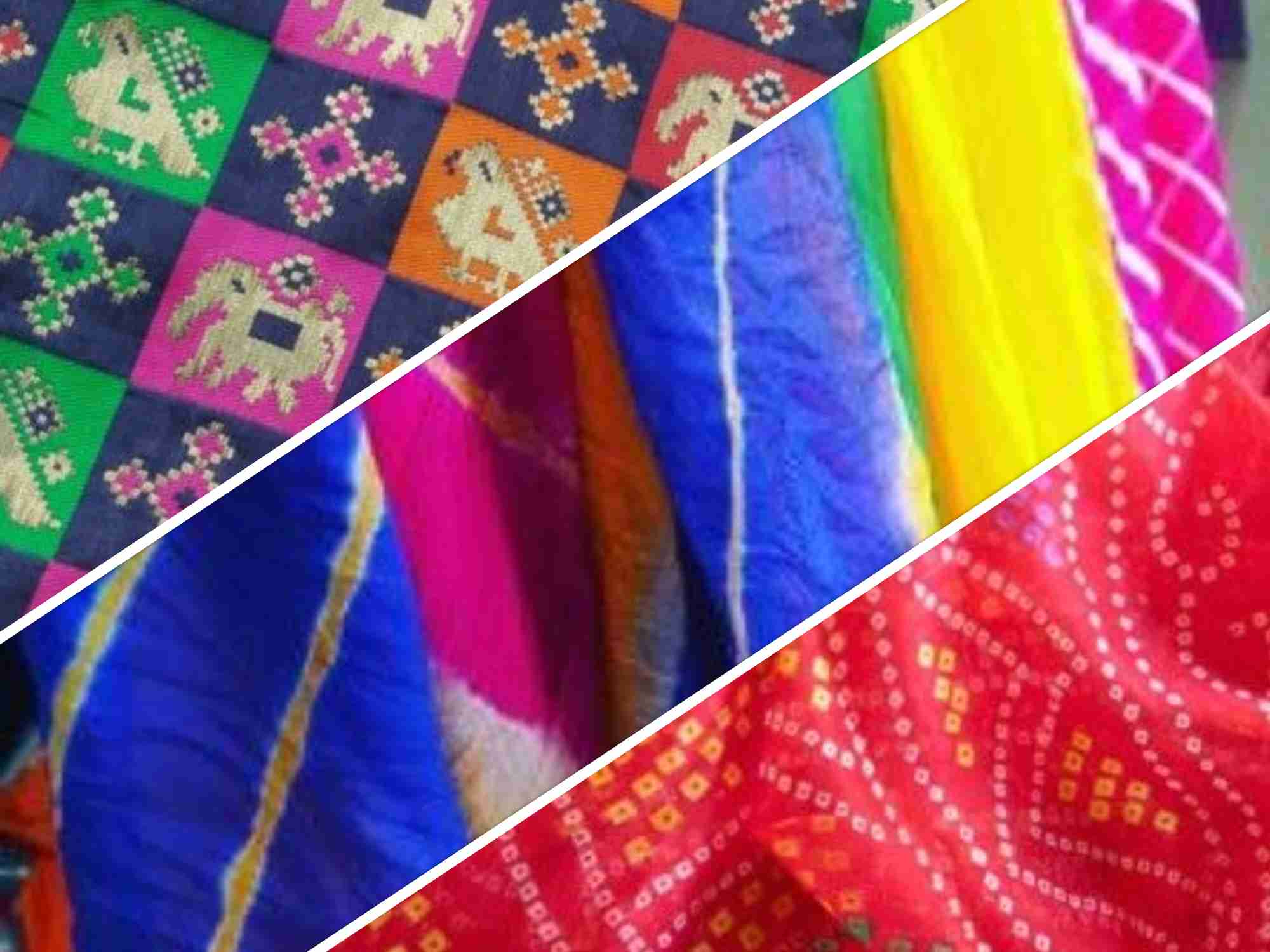
Tie Dye Techniques In India Tie Dye In India Bandhani Ikat Lehariya

The Tale Of The Oldest Tie Dye Of India

Tie Dye Techniques In India Tie Dye In India Bandhani Ikat Lehariya
